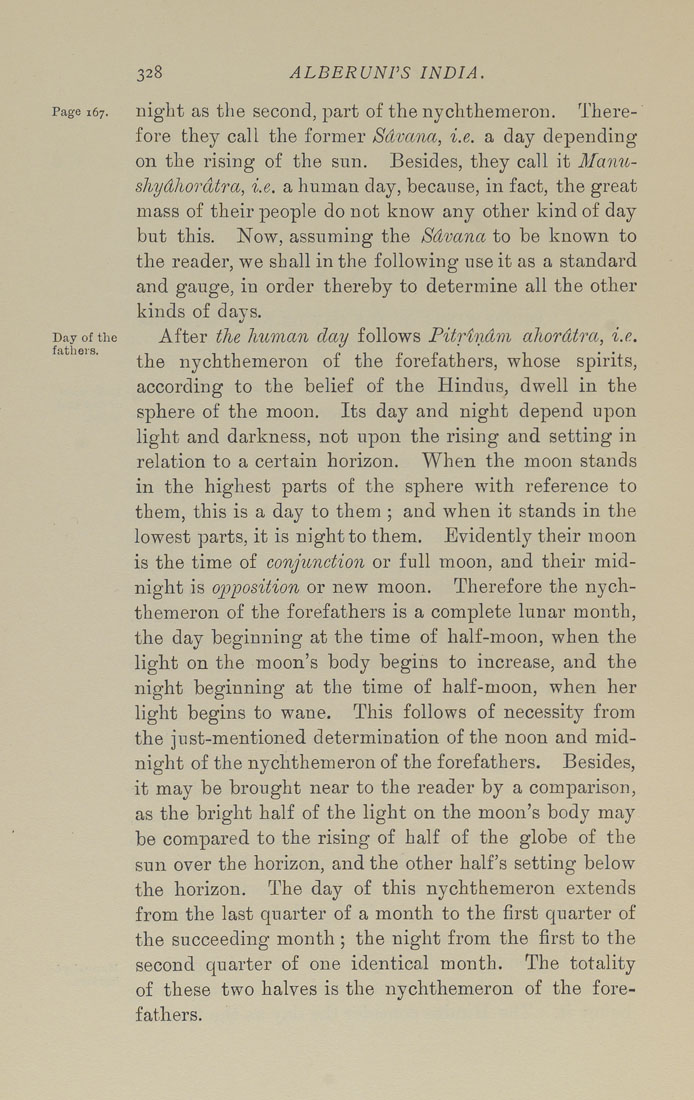Bīrūnī, Muḥammad ibn Aḥmad, Alberuni's India (v. 1)
(London : Kegan Paul, Trench, Trübner & Co., 1910.)
|
||
|
|
|
|
| Page 328 |

328 ALBERUNPS INDIA. Page 167. night as the second, part of the nychthemeron. There¬ fore they call the former Sdvana, i.e. a day depending on the rising of the sun. Besides, they call it Manu- shydhordtra, i.e. a human day, because, in fact, the great mass of their people do not know any other kind of day but this. Now, assuming the Sdvana to be known to the reader, we shall in the following use it as a standard and gauge, in order thereby to determine all the other kinds of days. Day of the After the human clay follows Pitrindm ahordtra, i.e. the nychthemeron of the forefathers, whose spirits, according to the belief of the Hindus, dwell in the sphere of the moon. Its day and night depend upon light and darkness, not upon the rising and setting in relation to a certain horizon. When the moon stands in the highest parts of the sphere with reference to them, this is a day to them ; and when it stands in the lowest parts, it is night to them. Evidently their moon is the time of conjunction or full moon, and their mid¬ night is opposition or new moon. Therefore the nych¬ themeron of the forefathers is a complete lunar month, the day beginning at the time of half-moon, when the light on the moon's body begins to increase, and the night beginning at the time of half-moon, when her light begins to wane. This follows of necessity from the just-mentioned determination of the noon and mid¬ night of the nychthemeron of the forefathers. Besides, it may be brought near to the reader by a comparison, as the bright half of the light on the moon's body may be compared to the rising of half of the globe of the sun over the horizon, and the other half's setting below the horizon. The day of this nychthemeron extends from the last quarter of a month to the first quarter of the succeeding month ; the night from the first to the second quarter of one identical month. The totality of these two halves is the nychthemeron of the fore¬ fathers. |
| Page 328 |







